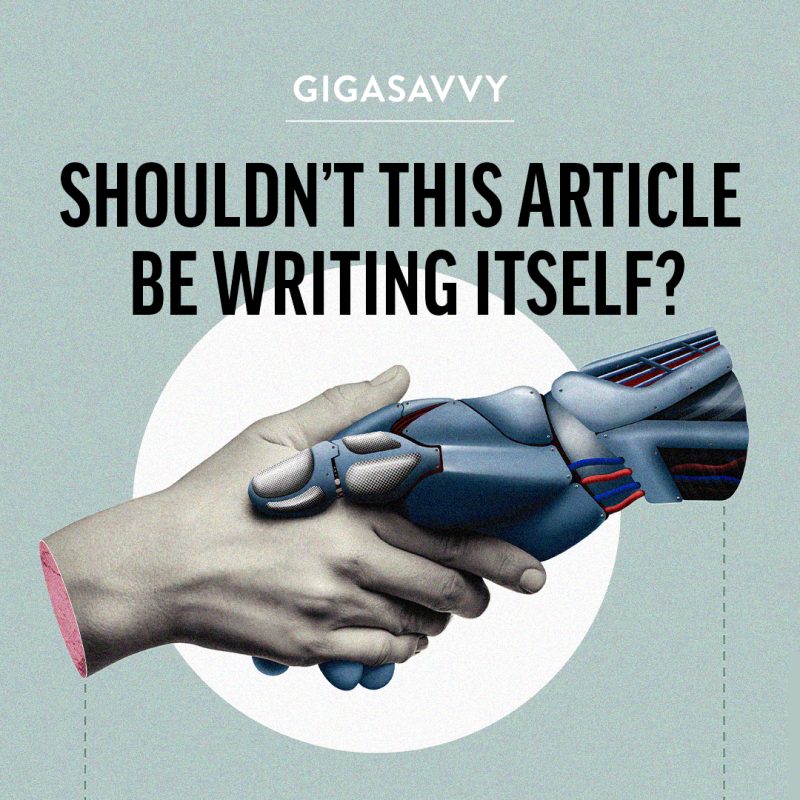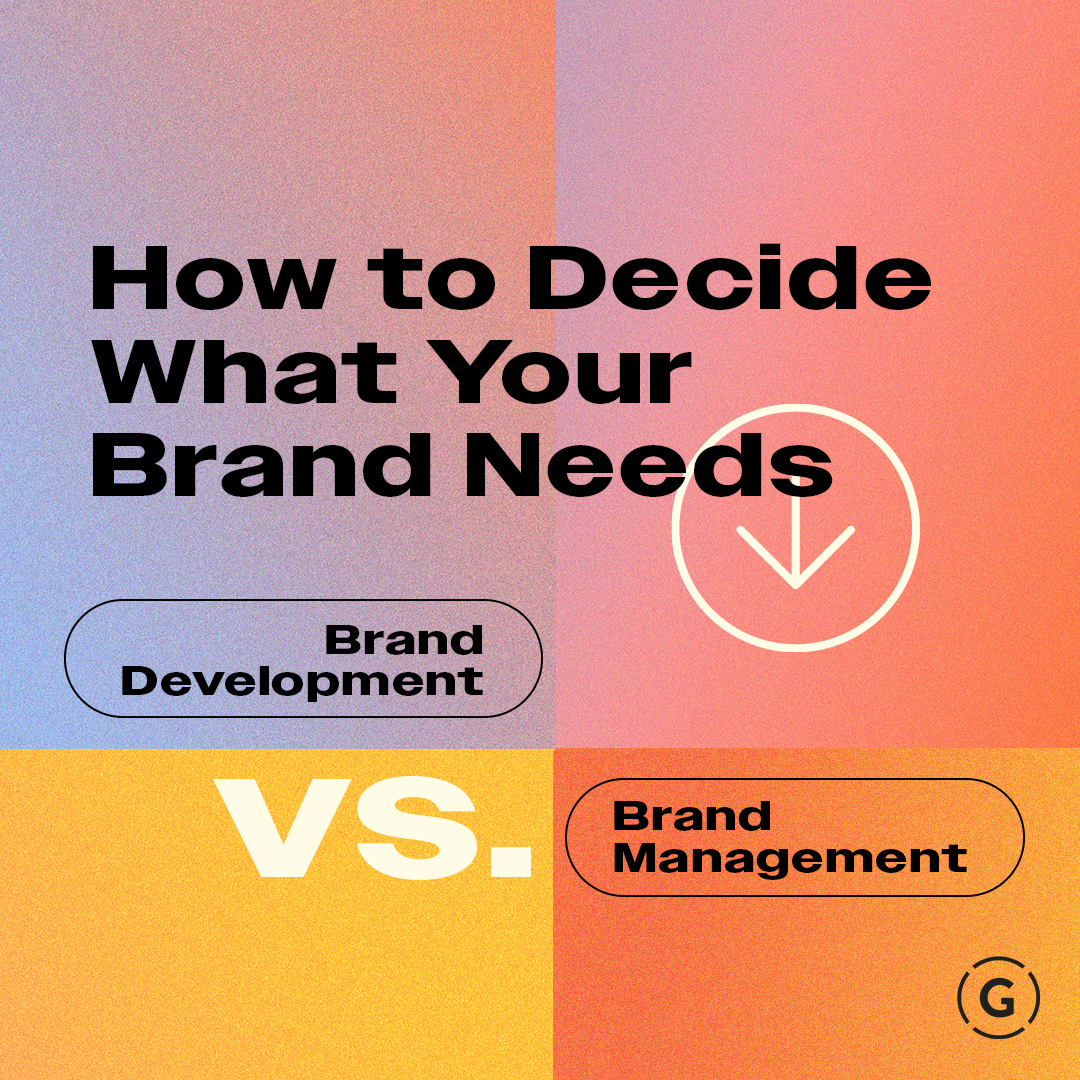Scanning my recent headlines, I would expect that ‘AI’ is a revolutionary technology that is going to radically simplify and better my life by doing all of my work for me. Or, replace the need for me entirely, become self-actualized, and take over the world. Odds are one or the other.
My initial reaction to this slew of content is to feel revolutionized yet instantly behind the curve. If AI is brand new, how have so many people managed to become experts? Published experts. Published and profitable experts.
Perhaps this is because AI isn’t actually new. The term ‘AI’ was coined in the early 1950s but the concept of technology and non-human tools has been around since the Stone Age.
A Brief History of the Future
In 1988, Pixar released one of their most successful short films. Despite financial constraints, Steve Jobs agreed, in the midst of a complete financial shutdown, to fund the project; and the Oscar Award Winning cartoon ‘Tin Toy’ aired at a 1988 SIGGRAPH Convention to standing ovation. This film was the first official test of a software called ‘PhotoRealistic RenderMan’ and was ultimately responsible for making computer animation a credible form of artistic production. Later in 2003, The Library of Congress elected this film for preservation in the US National Film Registry dubbing it ‘culturally, historically, or aesthetically significant.”
If you are scratching your head and trying to figure out why in the golden era of Pixar masterpieces, you do not remember anything about a toy named Tinny desperately trying to escape Billy the infant, it’s because the movie was wildly rejected by the public.
While the PhotoRealistic RenderMan software was truly spectacular, audiences hated the realistic features. Billy looked so human that it made people uncomfortable. Judge Adam Areseneau referred to this film in a DVD Verdict in late 2007 as “the most frightening and disturbing piece of animation in the history of this art form.” This feeling of unsettled rejection to human-like attributes, known as “Uncanny Valley Phenomenon”, is largely subjective and has been debated since the early ‘70s. Is this something that we need to ‘force’ humans to ‘get over’? Or is this something that we just need to accept, and continue producing lesser value productions for greater human enjoyment? I suppose this lends to the greater question, do we create to contribute, or just for the sake of saying we created something?
Fast forward to 2022, ChatGPT is released and the business world collectively loses their mind in pure panic mode trying to determine how and if to incorporate this revolutionary AI technology into their every day business.
Is it safe? Will it catch on? Are our competitors using it? Will it replace employees or require more skillsets? How are we going to find time to learn this? Can we use it to publish a blog about how we are at the cutting edge of using it while we figure out how to use it?
So, where do we start?
Let’s start with understanding the vernacular and distinguishing ‘AI’ from its buzzword counterpart.
AI (artificial intelligence) is an all encompassing term that essentially refers to any non-human generated smarts. This is in itself a paradox since humans are the ones who have to feed any technological algorithm.
ChatGPT, while not synonymous with AI, uses the concept of AI to act as a virtual assistant. While chatbot technology has been around since the 1960s, ChatGPT certainly upleveled that capability and is largely responsible for the recent surge in AI trending language.
But while your headlines may presently be drowning in AI tagged headlines that basically all say “AI has developed new technology…. We’re not sure how to use it… but it’s here and you/we should probably look into this”, AI is not new.
The Magic of a Good PR Spin
If there’s one thing marketers do exceptionally well, it is capitalizing on profitable products/services by pushing the same thing in a plethora of positioning variations. Leave it to marketing pros to support and proliferate ideas until they no longer hold any meaning. (Taylor Swift watches football. Enough Said.)
While AI continues to evolve and offer advanced use-cases and iterations, we needn’t panic about the overhaul of everything we know and understand about the world. Because we have already co-created with AI for decades.
Respond > React
It’s natural for marketers to live a bit on edge. The world is changing, trends are flying (thanks Internet), and with the flooding of new data every second, our understanding and positioning as well as that of our customers is shifting sometimes daily. With the fire under our feet and expectations to deliver exceptional marketing in the same way we did before our consumers had access to every transparent piece of information, this can be a daunting and frankly impossible ask for anyone to oblige.
Instead of reacting to every ‘new’ trend or buzzword, let’s respond. Reacting is impulsive and often rooted in panic and emotion. We immediately jump into tactics and make long-term decisions based on short-term insights. This can be exhausting as well as expensive as we are tasked with continually shifting direction. It’s like starting from scratch every single day.
When we respond, we pause to absorb the information we are receiving, and we wait until emotion subsides. We think about how to leverage what we already have, and we walk confidently forward in the same direction we have invested our time, energy, and dollars into since inception.
Leveraging AI
The goal of any business is to maximize profits and impact. When we partner with businesses to strengthen their brand, one of the first things we look for is their difference. What sets this brand apart from any other competitive offering? What is their story, their WHY, their personality? What can we share with their audience that they won’t be able to get anywhere else? One of the best ways I find to leverage AI is to sift and sort through the copious amounts of information available and use that to streamline your messaging.
Do marketers need to think about AI? Probably. But isn’t that in our job description as marketers? To think about everything?
What do we do with this information?
AI can be a great asset to your business. You can use it to research, automate, streamline, annotate…. But a tool is only as useful as the craftsman who knows how to use it.
Technology has existed and evolved since the beginning of time. Ideas are tossed to the masses and the acceptance or rejection of any new idea or change is largely rooted in providence and timing. AI, along with any other marketable product, will continue to be re-named, re-positioned, and re-released to capitalize on current trends. This is marketing.
Where do we as marketers draw the line between creating to contribute, and creating for our own egos? And when does this become problematic?
It’s not a question of whether or not the world should exist with AI, but rather how do we best use it to better the human experience. With the potential gain of technology, what are the potential losses? If we benefit from saving time and money at the expense of cutting thousands of job roles, what does that mean for our economy? For morale?
Our job as marketers, as creatives, is to not only know how to create, but when to stop. Going back to the uncanny valley phenomenon, Tin Toy was shelved, but ultimately became the story plot for another popular film series. With some revised and overly-animated cartooning and an A-list cast, Tiny Toy became what we now know and love as Toy Story, which ultimately inspired a whole new world of both award-winning and beloved entertainment.
Going back to HI
There is power in the story we create. The words we use and the frame we package truth within can dramatically alter perception and results, even when working with the exact same, accurate, data.
While we continue to tinker with technological advancements, it is crucial now more than ever that we highlight and preserve human intelligence and well-being. Considerations such as legal protections, plagiarism, privacy breaches, psychological impact, economic impact, etc are real human challenges that require exceptional levels of intelligence and discernment.
What is the real WHY behind technology? I would argue that technology exists to improve the human experience. It exists to make our lives easier, better, and more flexible so that we can enjoy more human experiences. Creativity without contribution is no longer about creating, but taking. Rather than hyper-focusing on the intricacies of technological tools, let’s put the focus back on connecting with our customers. This is where the real magic happens.
Gigasavvy helps brands move their business forward and position themselves for long-term success with comprehensive strategies, meaningful brand stories, and innovative creative campaigns. Connect with us to chat about how we can help you bring your brand into the future.



